

Black People Are 93% More Likely to Be Carjacking Victims
Across the board, carjacking is up 20 percent from 2020 to 2021.
Compare quotes from top providers

As inflation and unemployment rise, carjackings are becoming more common. But some people are much more at risk of falling victim to this crime than others. If you’re Black or Hispanic, live in a metropolitan statistical area (MSA), and make less than $75,000 a year, you’re a lot more likely to be carjacked than your white, suburban, affluent counterparts.
Are Carjackings Increasing?
From 2020 to 2021, carjackings increased by 20 percent. The most recent data for 2021 shows that across the U.S., for people 16 and older, carjacking occurred at a rate of 0.12 per 1,000 people. Here are the rates of nonfatal carjackings from 1995 to 2021, straight from the Bureau of Justice Statistics.
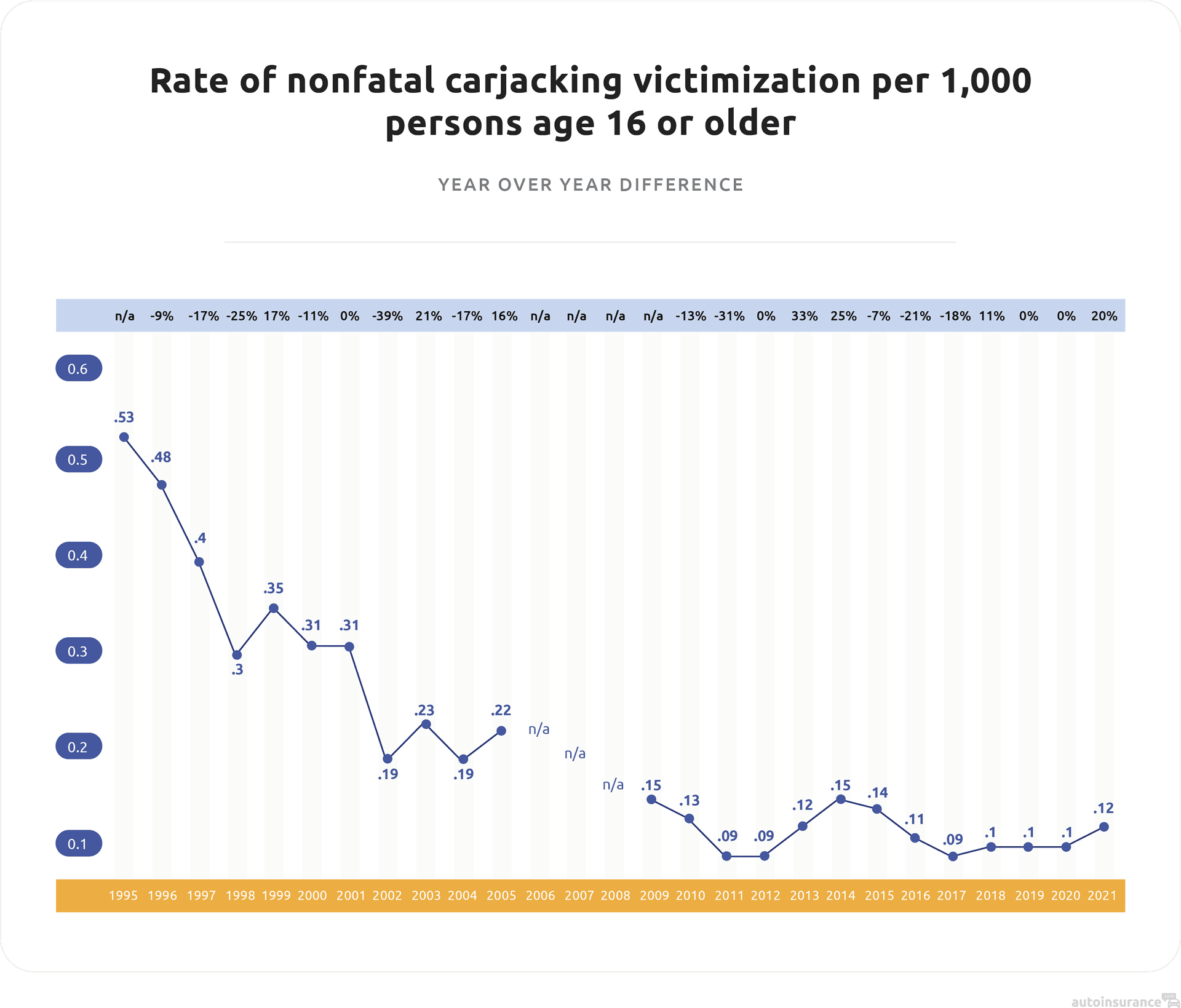 Although carjackings are on the rise year over year (2020 to 2021), they’re still relatively uncommon compared to a peak in 1995 of 0.53 per 100,000 U.S. residents. Generally, there has been a steady decline since 1996.
Although carjackings are on the rise year over year (2020 to 2021), they’re still relatively uncommon compared to a peak in 1995 of 0.53 per 100,000 U.S. residents. Generally, there has been a steady decline since 1996.
The Most Common Victims
Depending on where you live, what your race and household income are, and a slew of other factors, some people are much more likely to be carjacked than others.
Sex
Men and women are equally likely to be carjacked, a crime that falls into the larger category of auto theft. Is this what equal rights advocates wanted when they said they wanted gender equality? Something tells us no.
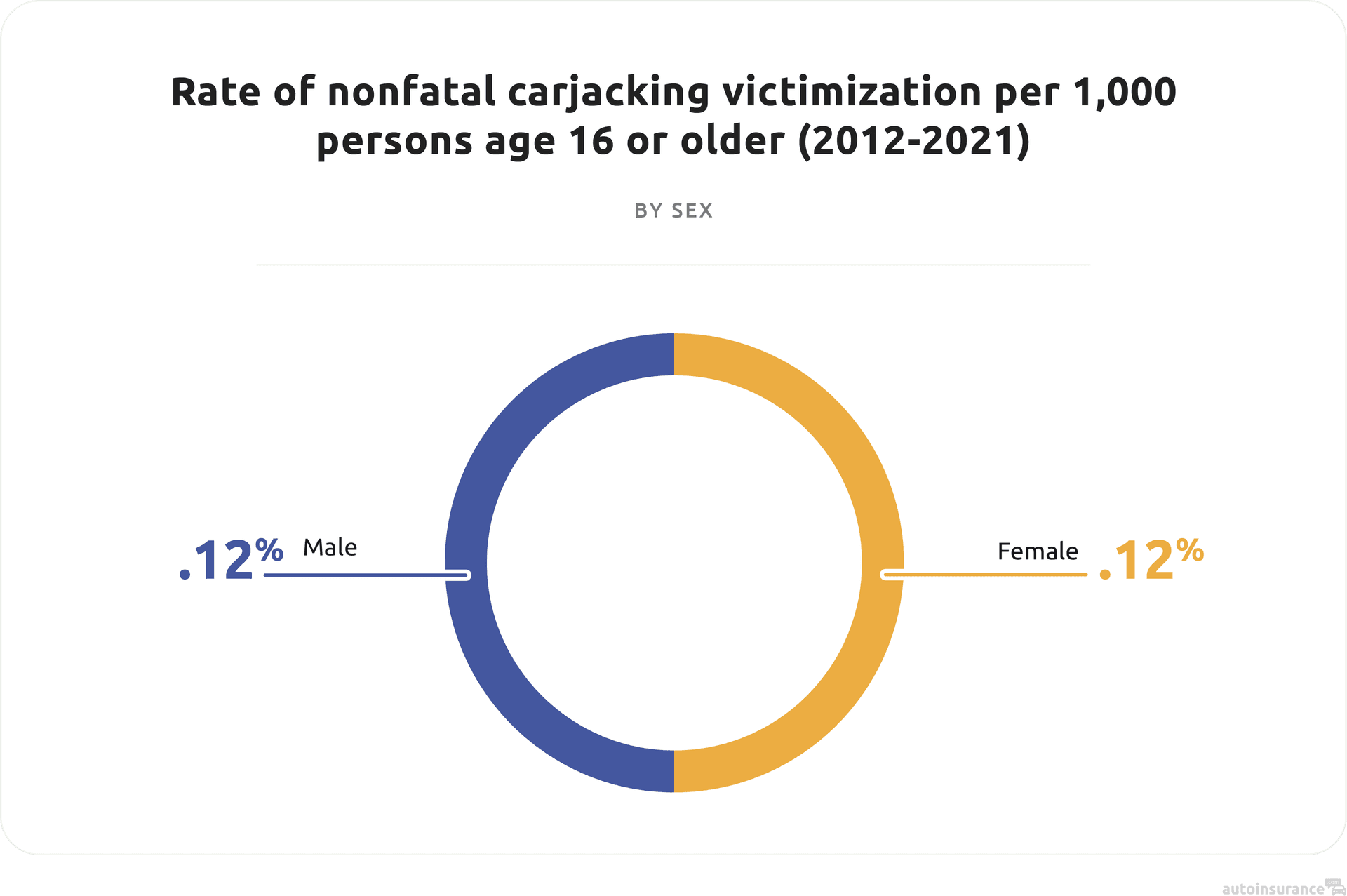
Race
Race plays a large part in carjackings, compounding other factors like where people live and their average household incomes. Data indicates Black people are the most likely carjacking victims, with 0.26 carjackings per 1,000 people. That’s a rate 93 percent higher than the national average across all races. Hispanic people are 64 percent more likely to be carjacked than the national average, while white people are 48 percent less likely.
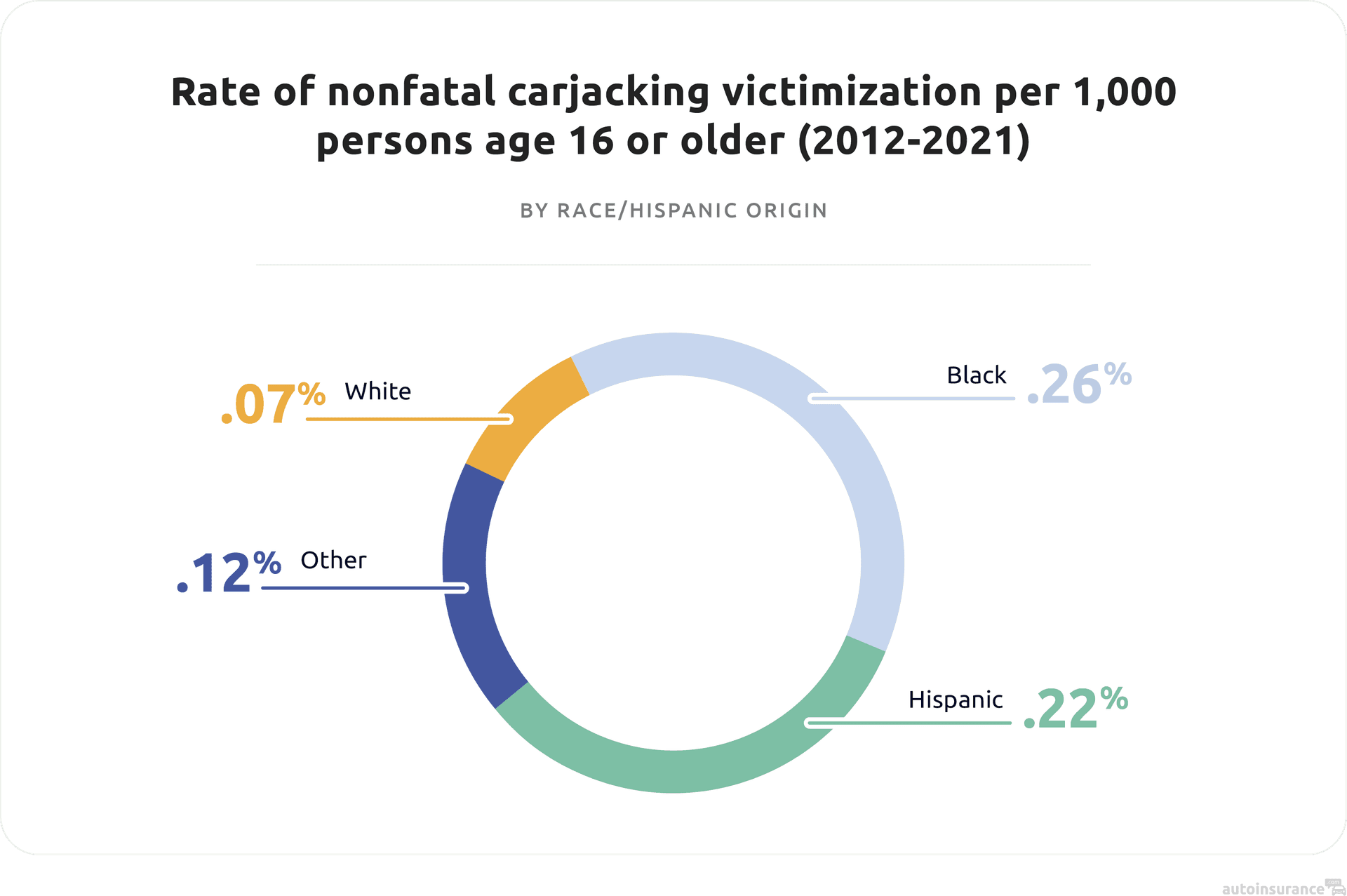
Age
Young people are the most common victims of carjacking, with the highest rates occurring between the ages of 20 and 34. Senior drivers 65 and older are the least likely to experience this crime.
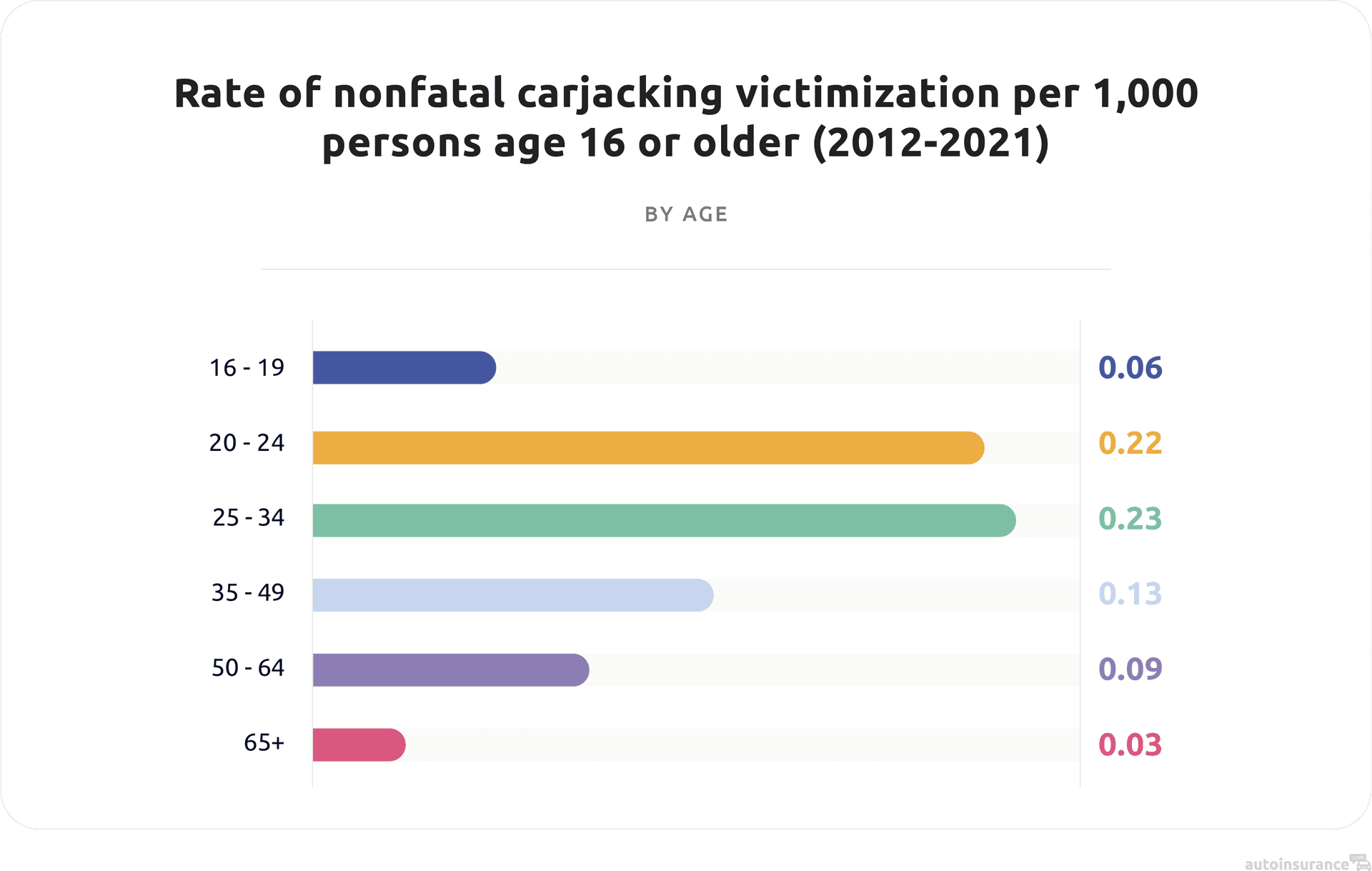
Marital Status
You know about the tax benefits of marriage, but did you also know married people are the least likely to be carjacked? Unfortunately, if you’re single, divorced, or separated, you’re more likely, on average, to experience carjacking.
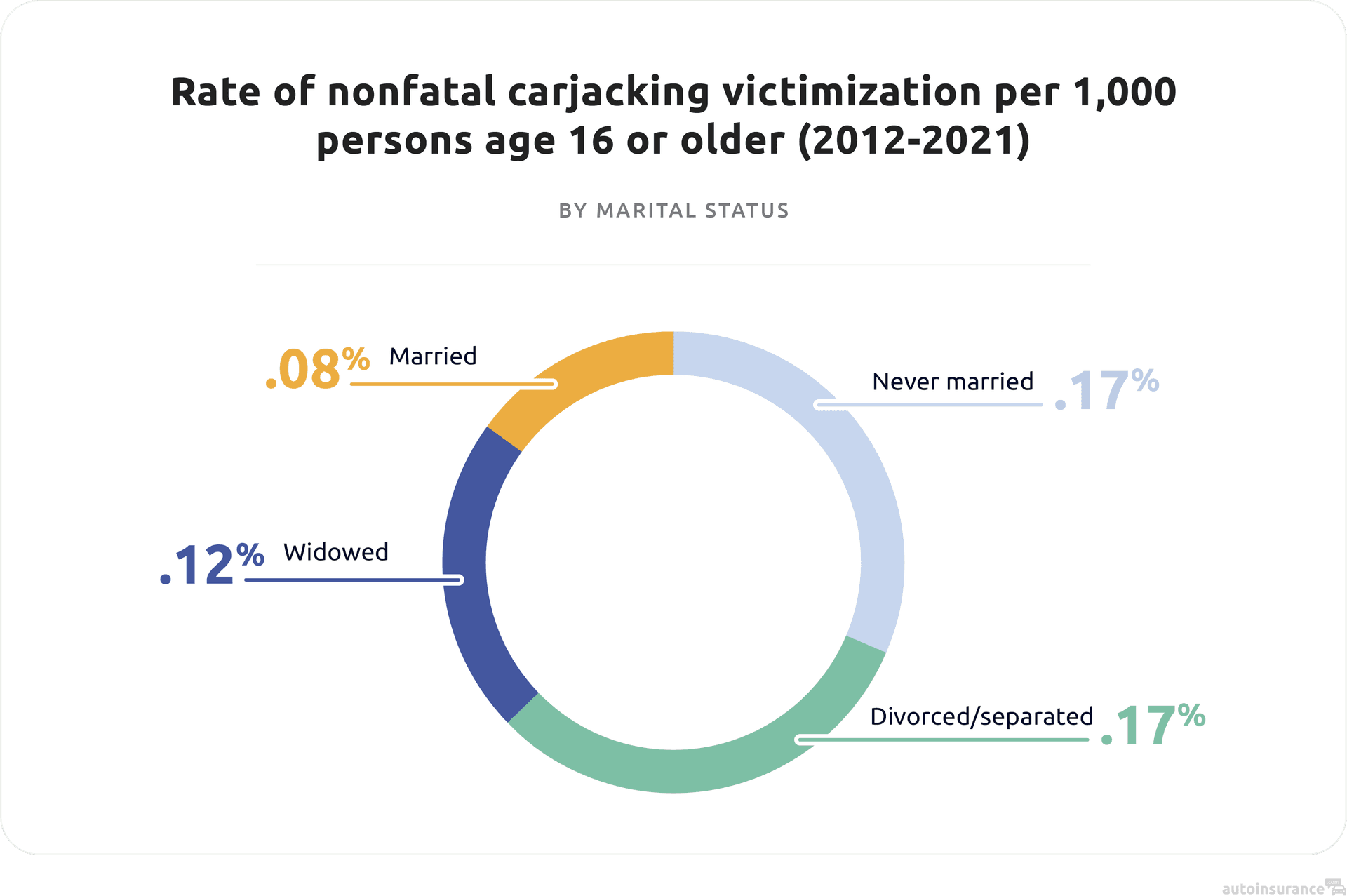
Household Income
Those with household incomes of more than $75,000 have carjacking victimization rates less than a third of those who make less than $75,000.
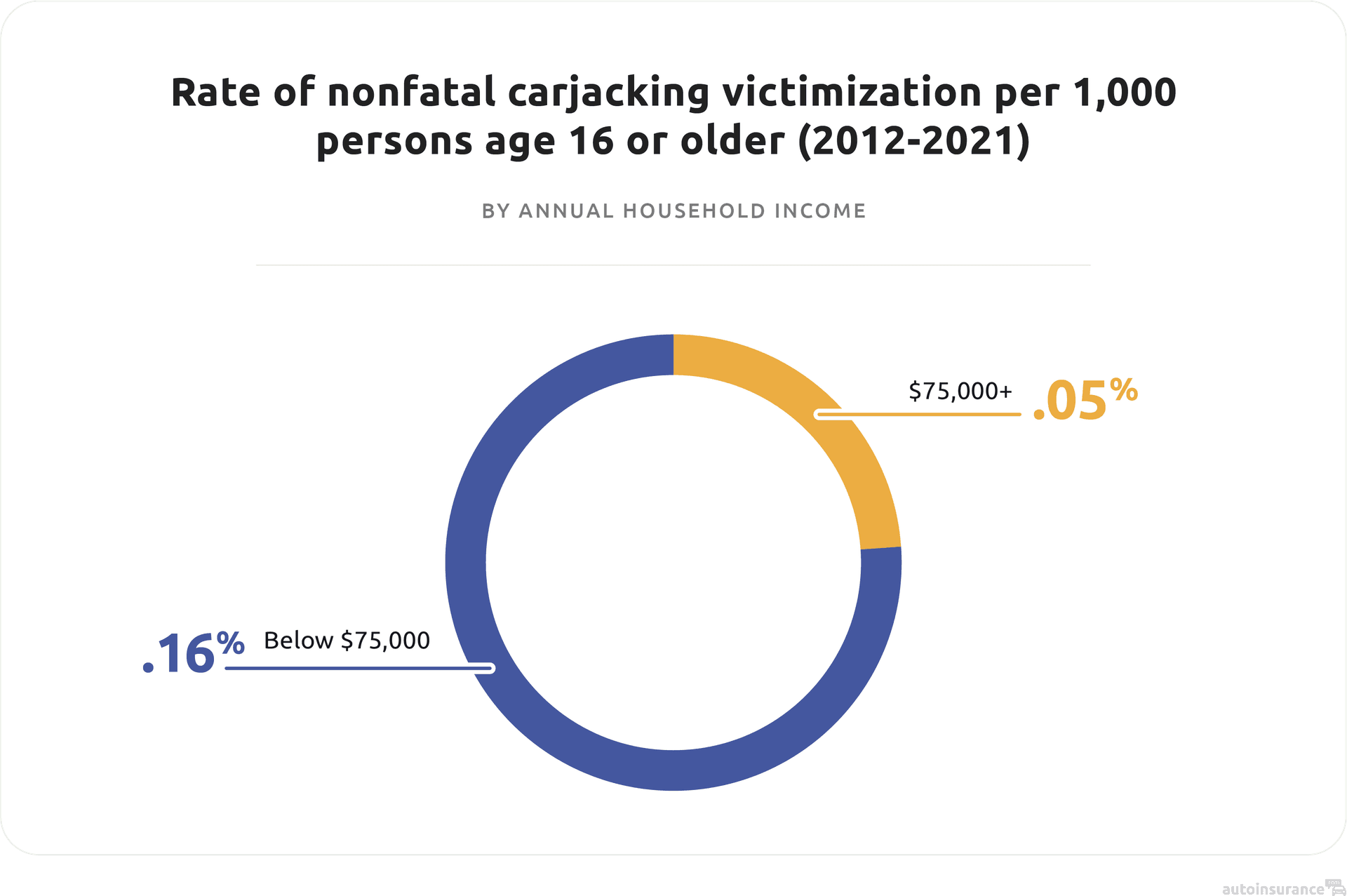
Unfortunately, if you lack comprehensive coverage, car insurance doesn’t cover theft. Although no state requires comprehensive coverage, we recommend adding it to your policy. Paying more now could mean paying less later if your car is stolen.
Carjacking Characteristics
Putting aside the demographics of the victims, the most common type of carjacking includes one victim, occurs near the victim’s home in an MSA, and involves weapons. The good news? In nearly three-quarters of carjackings, the offenders don’t injure the victims, and the drivers are able to recover their cars 55 percent of the time. Hey, it’s not a huge majority, but we’ll take it!
The Number of Victims
Nine out of 10 carjackings involve only one victim, which proves the old adage of strength in numbers.
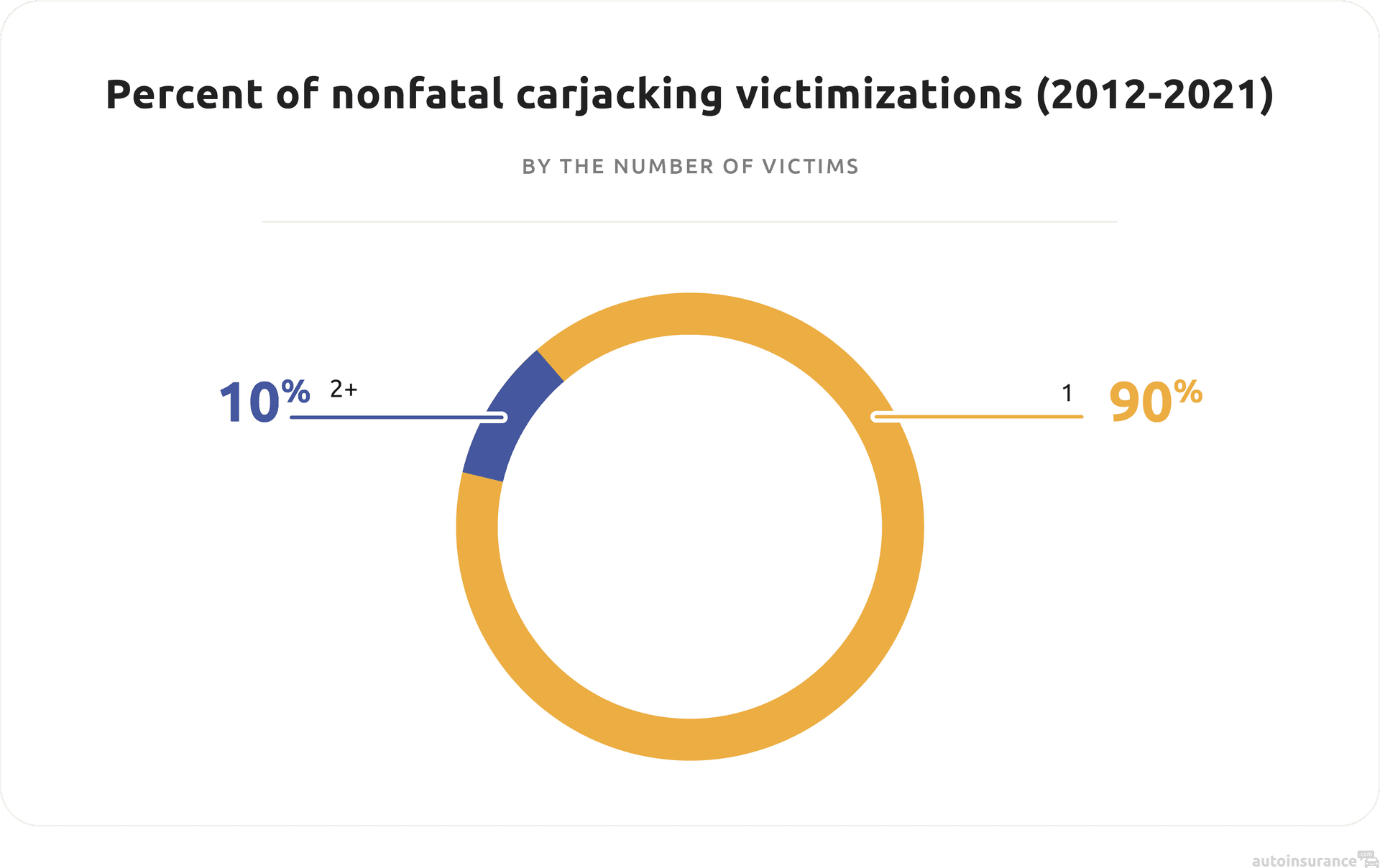
Where Victims Live
A whopping 97 percent of carjacking victims live in MSAs — urban areas. The more central to a city you live, the more likely carjacking becomes.
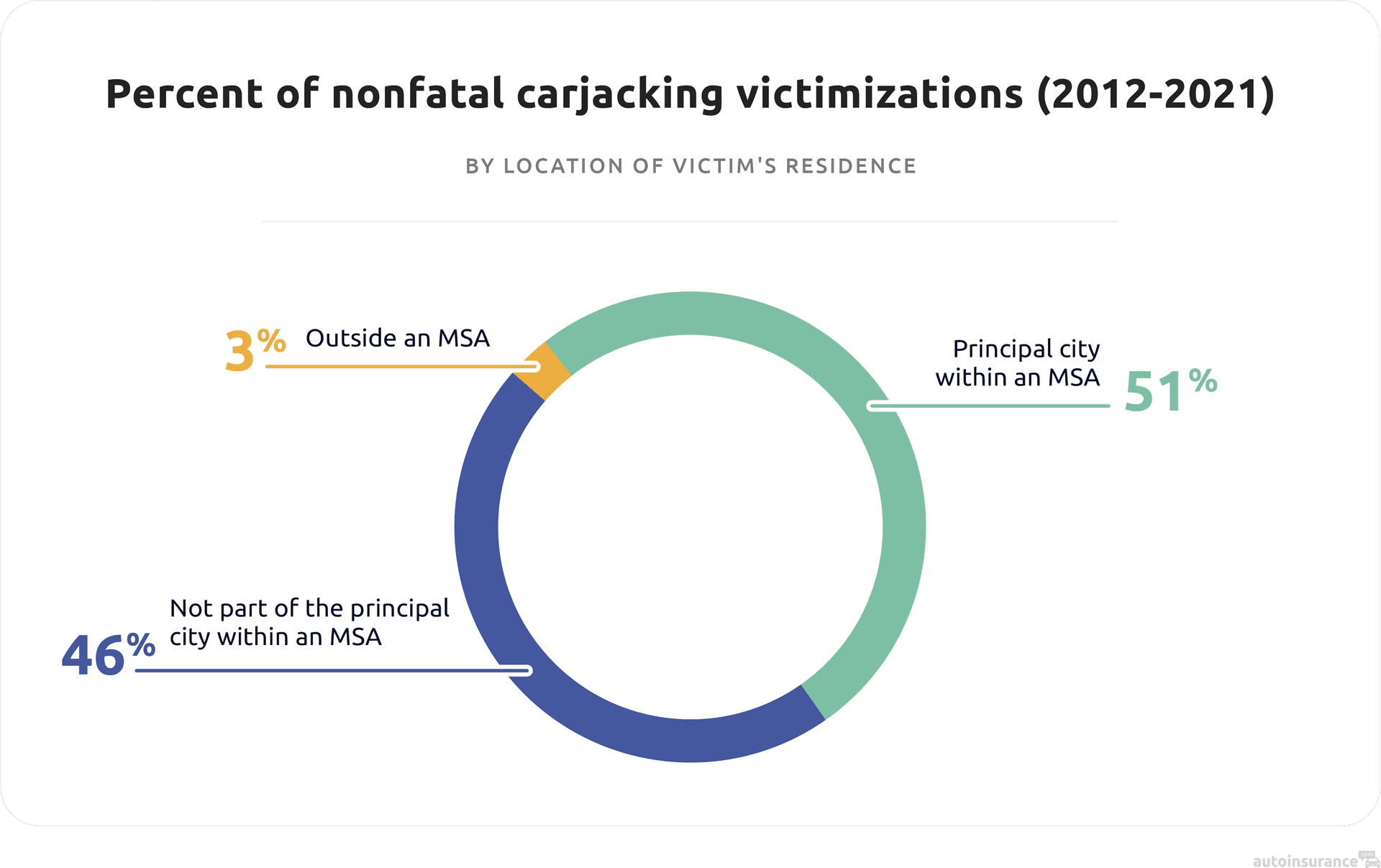
Where Carjackings Happen
And unfortunately, the plurality of nonfatal carjackings occur at or near a victim’s home in almost 4 out of 10 cases. Beware of dark streets, parking garages, and other commercial locations.
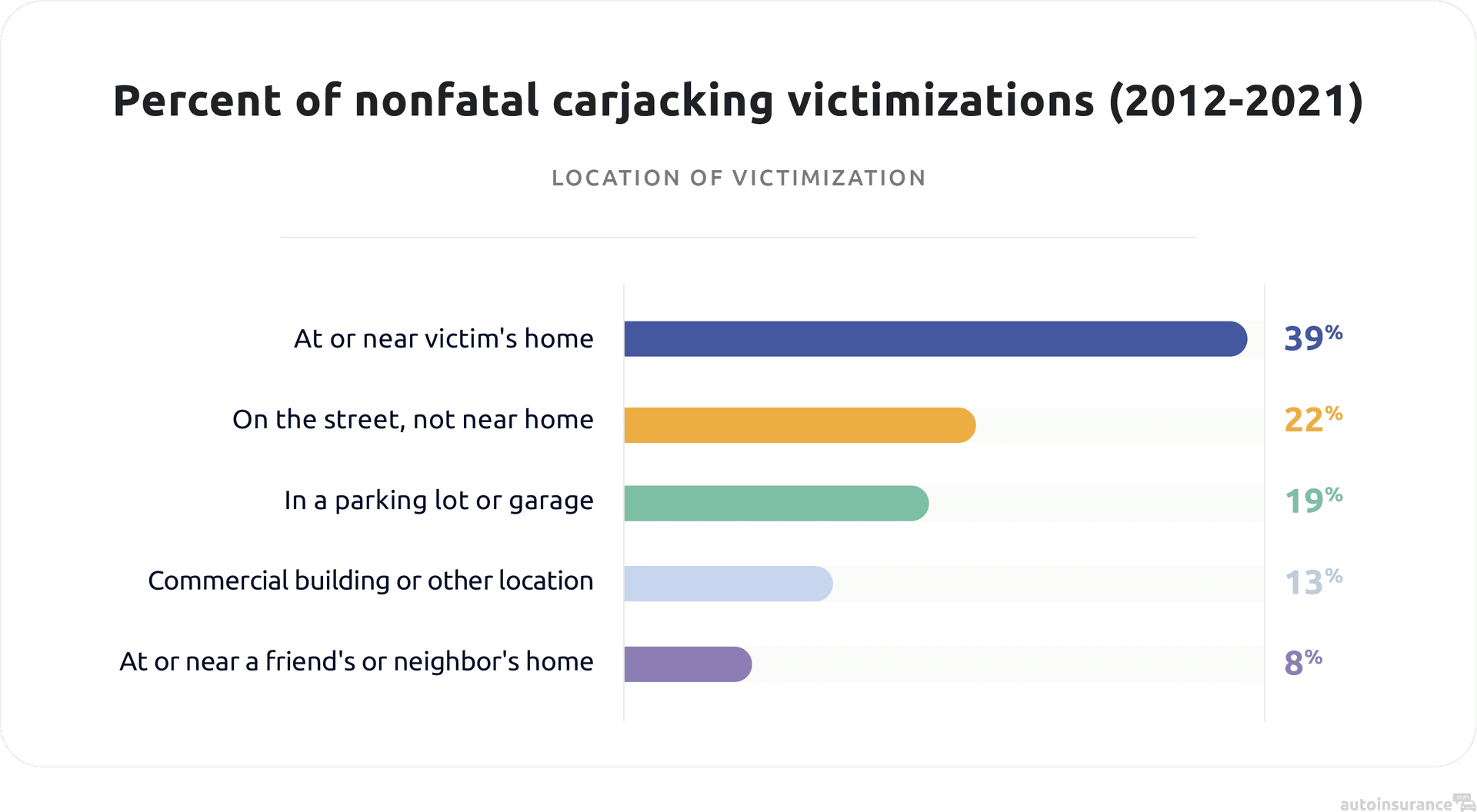
Car Recovery
Thirty percent of drivers in the U.S. use their car’s built-in navigation systems, according to the 2022 Statista Global Consumer Survey.1 This sector is growing; in 2018, the U.S. GPS tracking device market was worth $1.57 billion and is expected to reach $3.38 billion by 2025.2 So while, historically, 55 percent of carjacked vehicles are recovered, we expect that number to increase as GPS tracking becomes a more common feature that car manufacturers include.
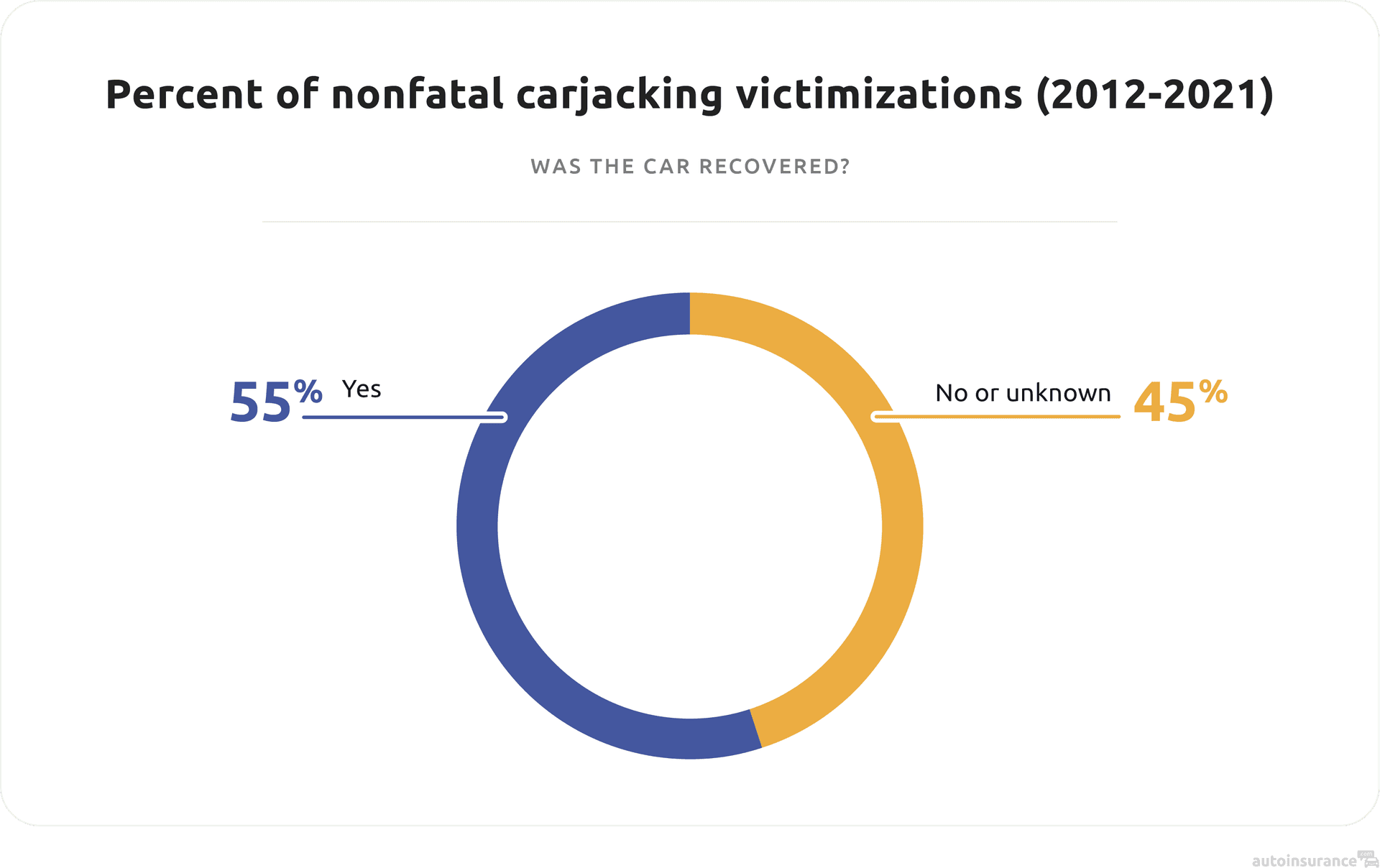
Armed Offenders
In nearly 6 out of 10 carjackings, the offender is armed, typically with a firearm. However, as you’ll see from the data further down, three-quarters of the time, the victim manages to avoid any injuries.
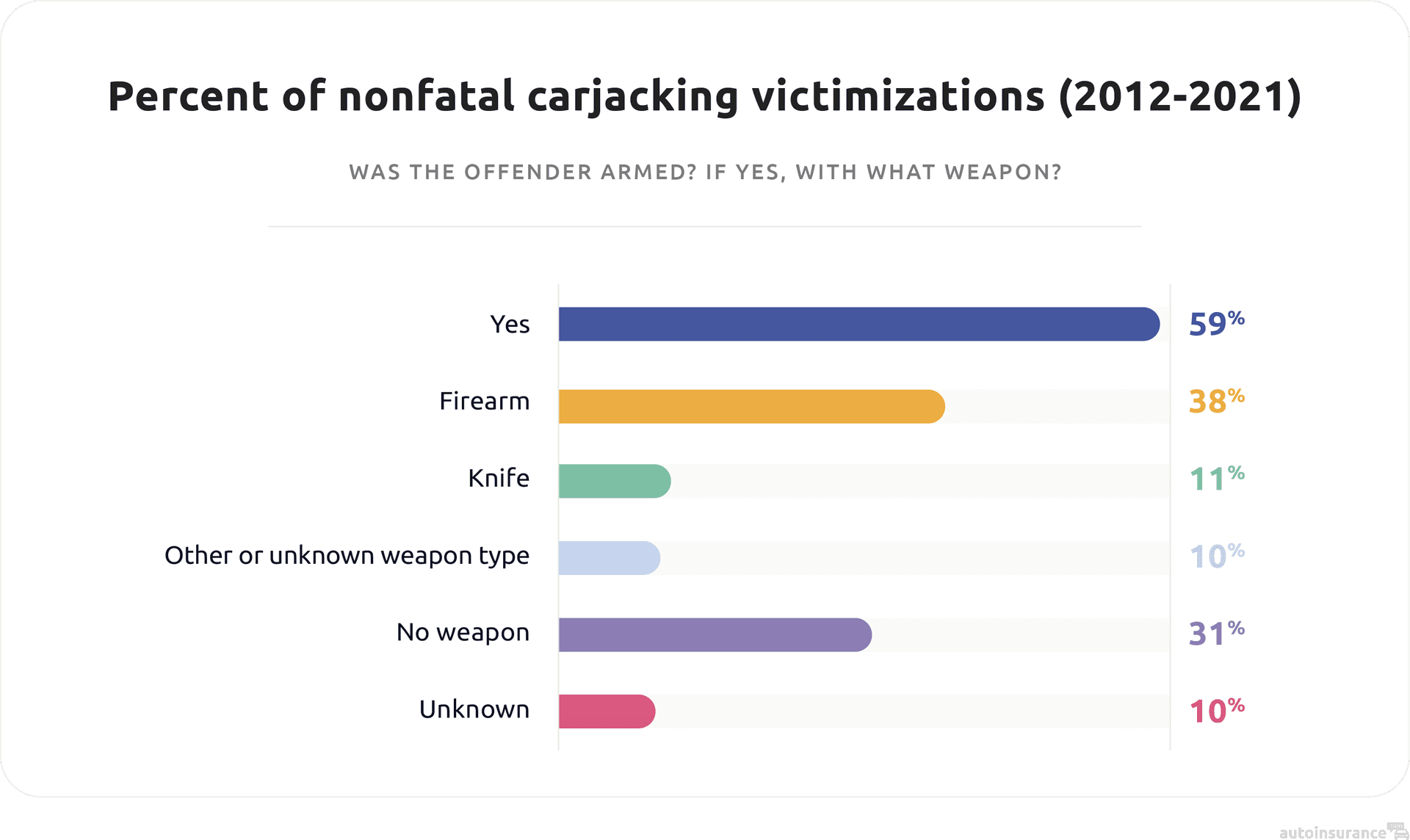
Resisting Carjacking
Law enforcement recommends that if you’re being carjacked, you shouldn’t resist. To avoid physical and verbal altercations, simply give up your car and flee the scene.3 While most victims attempt to resist the offender (53 percent), 47 percent follow law enforcement’s guidelines.
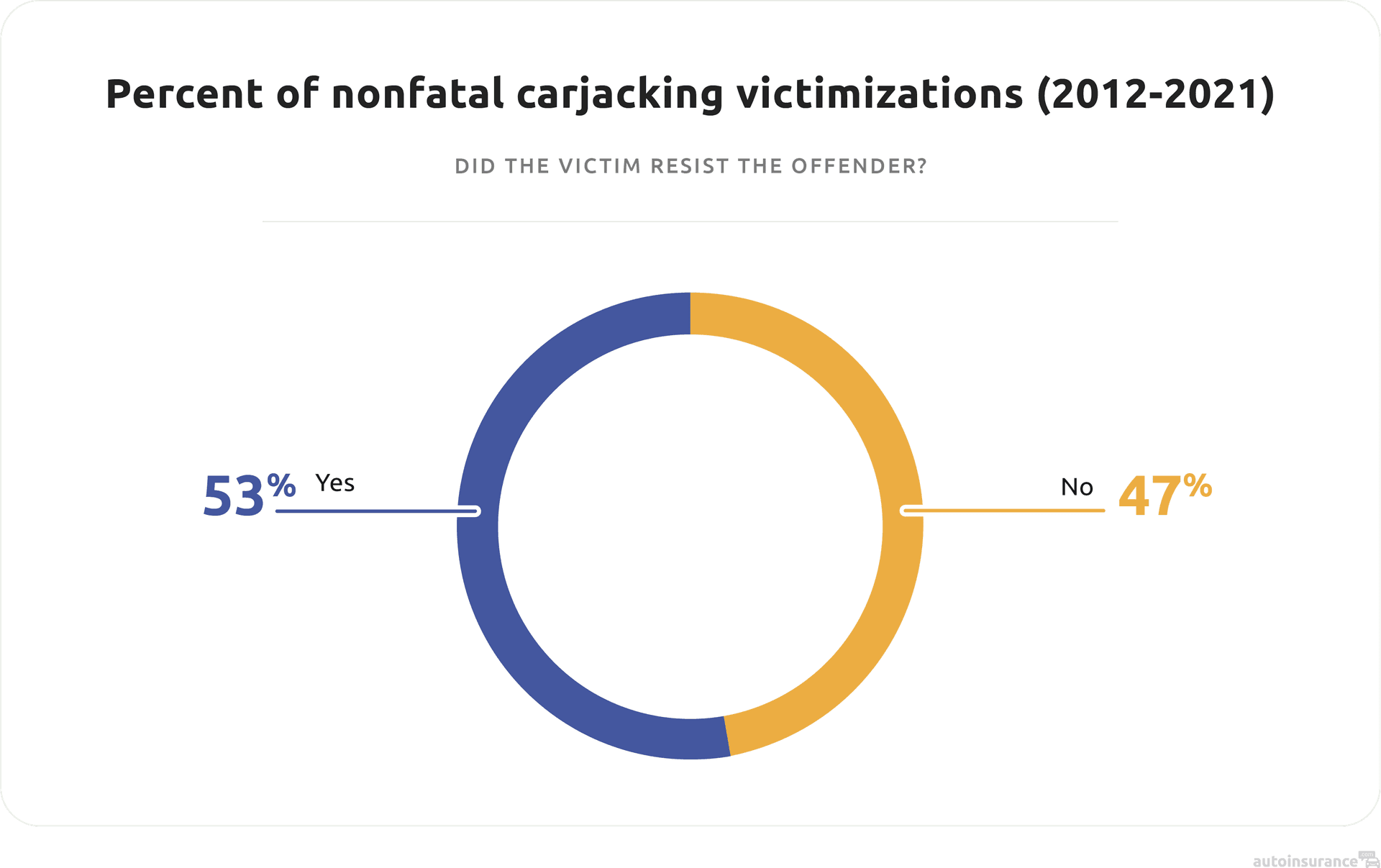
Victim Injuries
Most of the time, the offenders don’t injure their carjacking victims.
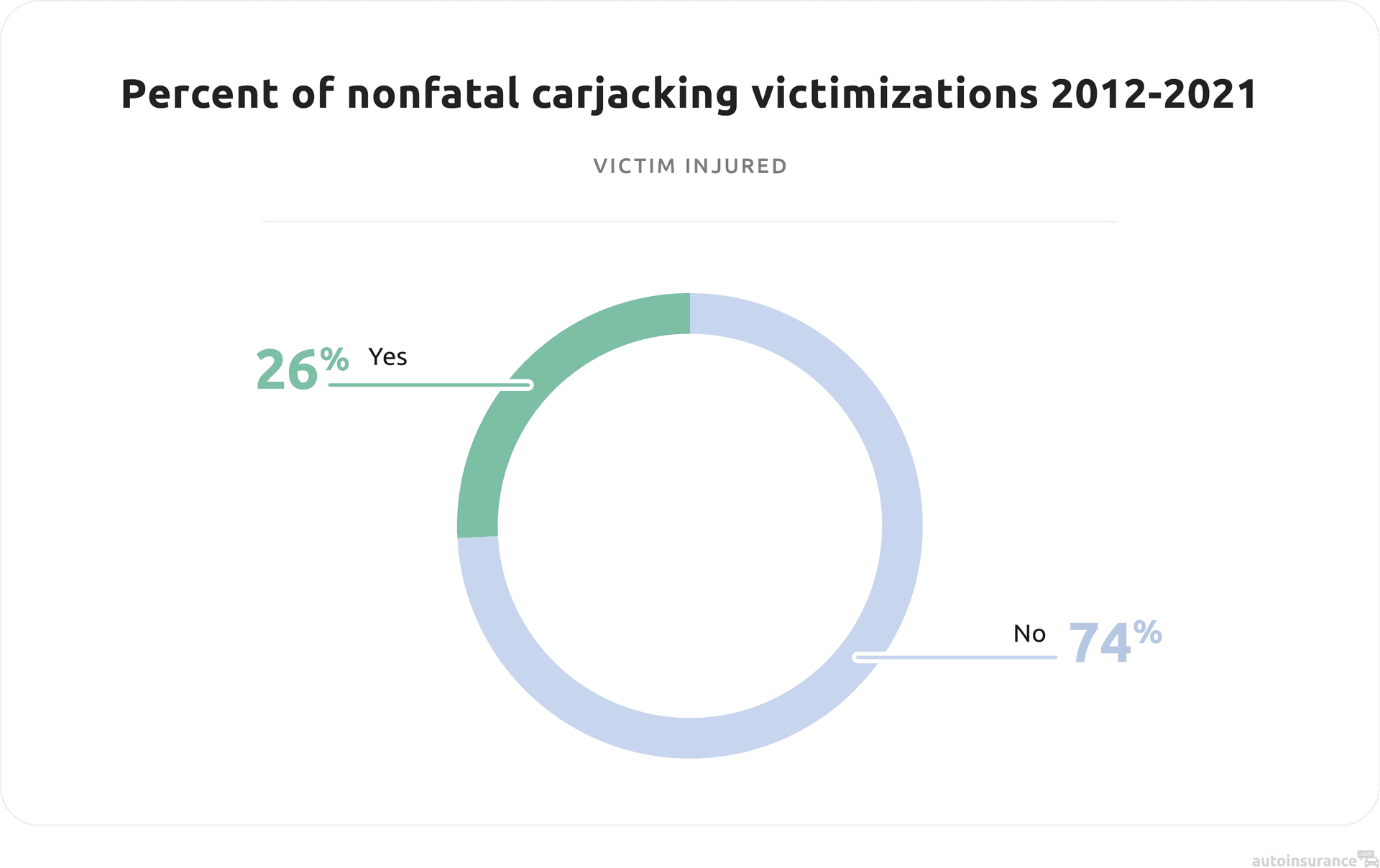
Victim-Offender Relationship
In about 6 out of 10 nonfatal carjackings, the offender was a stranger to the victim. In nearly 3 out of 10 incidents, the victim knew the offender.
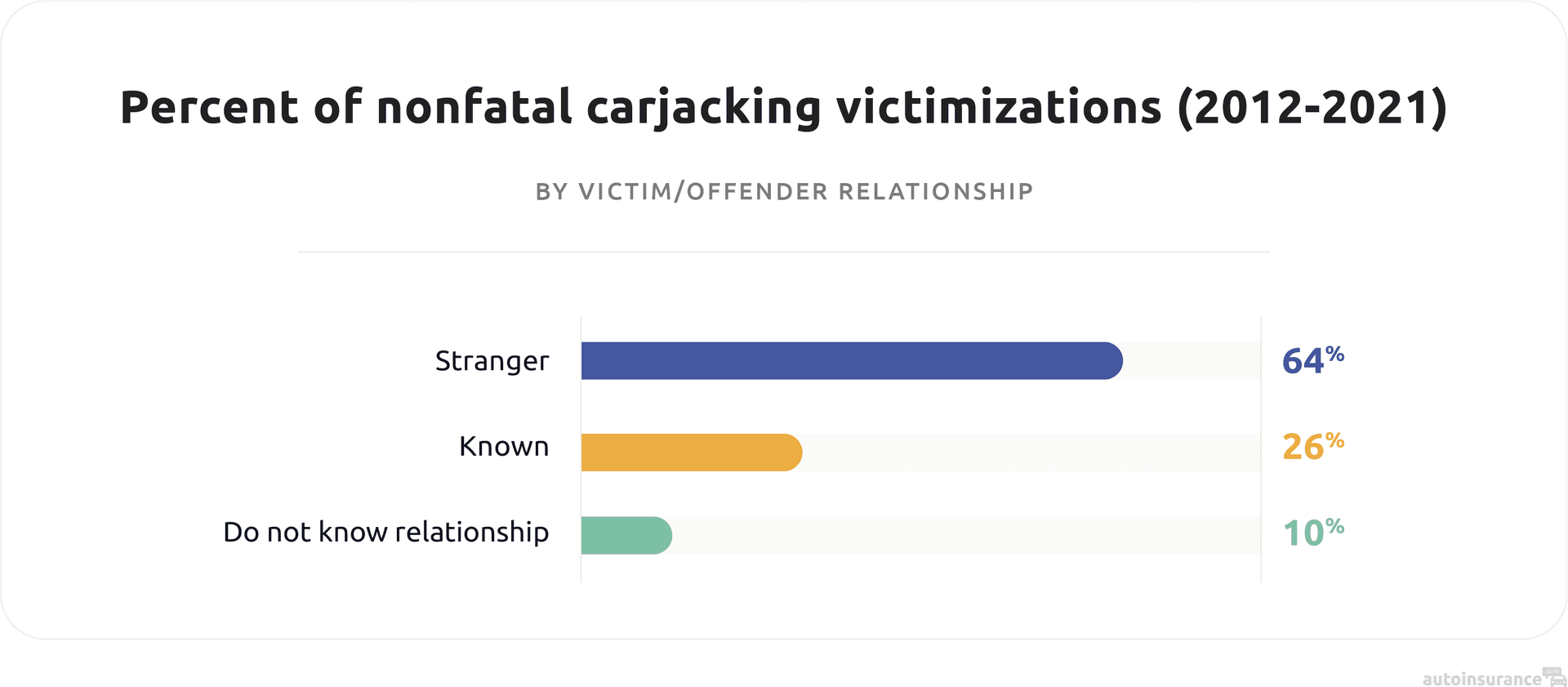
How to Protect Yourself From a Carjacking
- Keep your cell phone charged and nearby.
- Avoid driving in high-crime neighborhoods, empty parking lots, and isolated intersections and roads.
- Be aware of your surroundings at gas stations, when arriving at a residence, or while stopping at isolated ATMs.4
- Don’t leave valuable items in your vehicle.
- Don’t stop for strangers along the road, even if they’re ostensibly stranded or flashing their lights. This has become a tactic for car theft. Instead, keep your windows rolled up and your doors and windows locked as you drive past. If someone approaches your car, ignore them.
- Install a GPS tracker on your vehicle if it’s not already built in. You may also get an auto insurance discount by having an anti-theft device.
- Lock your doors while driving and sitting in your car.
- Park in brightly lit areas.5
Citations
Online-based car features in the U.S. in 2022. Statista. (2022, Nov 28).
https://www.statista.com/forecasts/997131/online-based-car-features-in-the-usGPS Tracking Device Market: GPS Tracking Device Market Size, Share & Trends Analysis Report. Brand Essence. (2022, Nov).
https://brandessenceresearch.com/Technology-And-Media/gps-tracking-device-market-sizeHere’s What to Do if You’re Being Carjacked, How to Prevent It. NBC Chicago. (2021, Jul 15).
https://www.nbcchicago.com/news/local/heres-what-to-do-if-youre-being-carjacked-how-to-prevent-it/2555546/How to prevent auto theft and carjacking. Insurance Information Institute – Auto Insurance. (2022).
https://www.iii.org/article/how-to-prevent-auto-theft-and-carjacking#Prevent%20carjacking